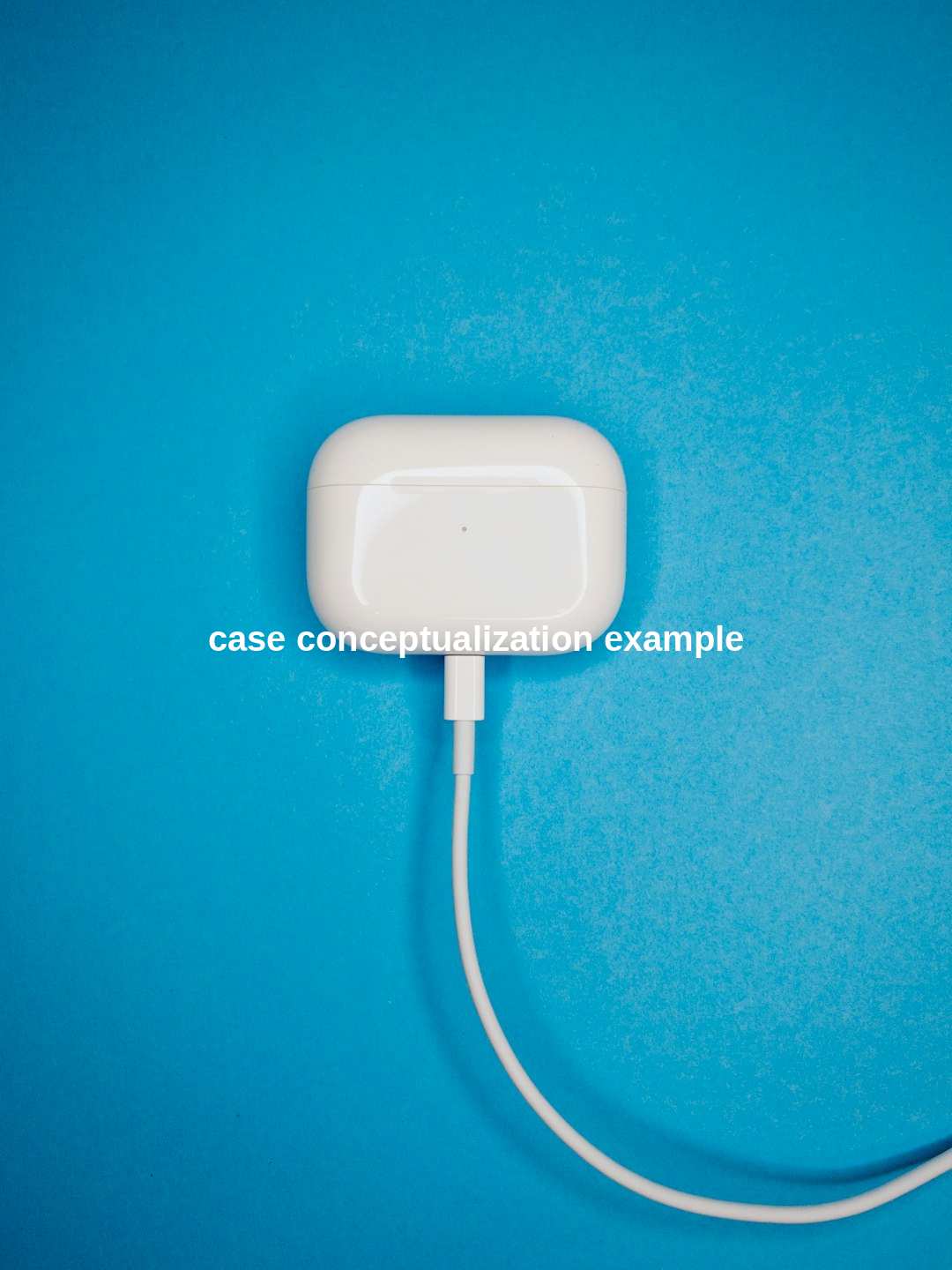Case conceptualization is a foundational skill in psychological practice, providing therapists with a framework to understand a client’s issues, how they developed, and what is keeping them going. It forms the basis for a tailored therapeutic strategy, guiding interventions, and tracking client progress. Including a case conceptualization example can illuminate the complex interplay between theory, therapeutic frameworks, and individual client needs. This process is dynamic and should be revisited over the course of therapy to reflect changes in the client’s status or response to treatment. Without a comprehensive case conceptualization, therapy may become a series of uncoordinated interventions that lack a strategic approach.
| Aspect | Details |
|---|---|
| Client Information | Demographics, presenting problem, and mental health history |
| Theoretical Orientation | Perspective guiding the clinician’s interpretation and interventions |
| Assessment Tools | Tests, interviews, or questionnaires used to gather data about the client |
| Treatment Goals | Client-specific objectives to be achieved through therapy |
Understanding “Case Conceptualization”: The Foundation of Tailored Therapy
Breaking Down the Elements of Case Conceptualization
At its core, case conceptualization is a method for understanding and organizing the complexities of client presentations. This understanding helps therapists tailor their interventions to fit the unique needs of each individual. The process involves integrating various sources of information into a cohesive narrative that explains why a client is experiencing difficulties and how these problems are maintained over time.
Four key components can usually be identified in a robust case conceptualization: client information, theoretical orientation, assessment tools, and treatment goals.
1. **Client Information:** This entails gathering detailed information about the client’s life, including their current and past psychological symptoms, personal history, social context, and any biological or cultural factors that may affect their mental health.
2. **Theoretical Orientation:** Mental health professionals often rely on specific theories to guide their understanding and approach. These theories can range from cognitive-behavioral, psychodynamic, humanistic, or systemic, among others, and they direct the lens through which a therapist views a client’s issues.
3. **Assessment Tools:** In order to accurately conceptualize a case, therapists use various assessment tools to gather data. This can include standard psychological tests, structured or unstructured interviews, self-report questionnaires, or behavioral observations.
4. **Treatment Goals:** These are developed in collaboration with the client based on the information gathered and the therapist’s understanding of the client’s issues. Effective goals are usually specific, measurable, attainable, relevant, and time-bound (SMART).
Case conceptualization requires ongoing refinement. As clients progress in therapy, their needs may change, and conceptualizations should be updated to reflect new information or changes in the client’s life. Mastery of this skill is essential for delivering effective, personalized therapy that can adapt to the evolving landscape of a client’s mental health.
Navigating Through a “Case Conceptualization Example”: A Step-by-Step Guide

Step 1: Gathering Client Information
The first step in working through a case conceptualization example is collecting comprehensive data about the client. This includes understanding the presenting problem, as well as historical, cultural, and social factors that contribute to the client’s current situation.
The key to a thoughtful case conceptualization example is thoroughness in gathering multifaceted client information—a cornerstone for creating an effective treatment plan.
Step 2: Applying Theoretical Orientation
The clinician’s theoretical orientation serves as a lens through which client information is interpreted. Whether it’s cognitive-behavioral, psychodynamic, or another framework, it suggests pathways for intervention and potential therapeutic outcomes.
In a case conceptualization example, the clinician’s theoretical orientation anchors the interpretation of client data and directs the course of treatment.
Step 3: Utilizing Assessment Tools
Selection and use of appropriate assessment tools assist in validating the clinician’s hypotheses about the client’s concerns and provide a structured way to measure symptoms and progress.
Effective case conceptualization examples rely on evidence collected through standardized assessment tools to inform and support the clinician’s hypotheses and treatment directions.
Step 4: Setting Treatment Goals
Treatment goals should be established collaboratively with the client, ensuring that they are specific, measurable, achievable, relevant, and time-bound (SMART). These goals will guide the intervention strategies and therapeutic focus.
Setting SMART goals in a case conceptualization example ensures that therapy is focused, client-centered, and primed for measurable success.
Integrating Theoretical Frameworks and Tools in Case Conceptualization
Combining Multiple Perspectives
An integrative approach to case conceptualization involves combining different theoretical frameworks and tools. This is often necessary to fully grasp the complexity of a client’s presenting problem and to tailor the therapy approach.
A rich case conceptualization example draws on multiple theoretical perspectives, allowing for a more nuanced and comprehensive understanding of the client’s experiences.
Selecting Appropriate Tools
Clinicians must choose assessment tools that are consistent with their theoretical approach and that will offer the most relevant information for the conceptualization process.
Selecting assessment tools that align with the therapist’s theoretical framework is essential for crafting a coherent and practical case conceptualization example.
Learning from Real-World Scenarios: Clinical Case Examples and Their Conceptualizations
Dissecting Case Studies
Analyzing real-world case examples provides invaluable learning opportunities for therapists. By breaking down these case studies, clinicians can understand the decision-making process and the application of theory to practice.
Real-world case conceptualization examples serve as a bridge between theory and practice, allowing clinicians to refine their skills through analysis and reflection.
Adapting to Complexity
Every client is unique, and real-world cases highlight the necessity for therapists to adapt and adjust their conceptualizations as more information becomes available or as circumstances change.
Clinical flexibility and a willingness to adapt are crucial traits that can be developed through the study of varied case conceptualization examples.
By engaging deeply with each of these elements, mental health professionals hone their ability to create comprehensive case conceptualizations that are vital for delivering effective and individualized therapy.
Conclusion: The Impact of Mastering Case Conceptualization on Effective Therapy Practice
Mastering case conceptualization is essential for any therapist aiming to offer personalized and effective treatment. This systematic approach helps therapists to understand a client’s unique situation and tailor their therapeutic strategies accordingly. The ability to craft a comprehensive case conceptualization is not only a marker of a clinician’s skill but also significantly influences the therapeutic outcomes. The impact of mastering case conceptualization on effective therapy practice cannot be overstated, as it enables clinicians to navigate the complexities of mental health with agility and precision.
When we consider the entire process of case conceptualization, several critical aspects come to the fore:
- Gathering extensive and detailed client information is the starting point for any effective case conceptualization.
- Theoretical orientation acts as a guiding framework for the therapist’s interpretation of client data and influences the choice of treatment interventions.
- Assessment tools play a key role in gathering objective data, validating hypotheses, and monitoring progress throughout the therapeutic process.
- Developing SMART treatment goals in collaboration with the client ensures that therapy is goal-oriented and measurable.
- An integrative approach that combines various theoretical models and tools can provide a more nuanced understanding of the client’s issues.
- Studying real-world case conceptualization examples can significantly enhance a therapist’s clinical skills and adaptability.
- Ultimately, the thoroughness and adaptability of case conceptualization practices determine the effectiveness of therapy.
In conclusion, the process of case conceptualization is a cornerstone of successful therapy outcomes. It equips clinicians with a roadmap for understanding and addressing the complex, multi-layered aspects of a client’s mental health. Through diligent practice and ongoing learning, therapists can enhance their proficiency in this area, effectively translating conceptualizations into life-changing interventions for their clients.


